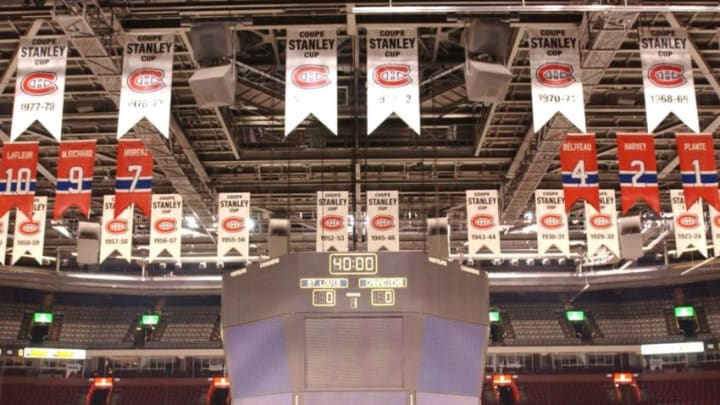Montreal Canadiens: Five Trades That Ruined Habs Latest Dynasty Before It Started

What would Montreal Canadiens have looked like without these trades?
The Canadiens had a pretty lousy close to the last millennium. After all of the aforementioned trades were made, they lost in the first round of the 1996 playoffs, the first round of the 1997 playoffs, the second round of the 1998 playoffs and then missed the playoffs in 1999, starting only their second ever run of three consecutive years without playoff hockey.
They did have a few bright spots with Vincent Damphousse and a young Saku Koivu up front. They also had Vladimir Malakhov and Patrice Brisebois on the back end who were forced to be a top pairing but Brisebois might have been in a bit over his head in that role.
They had a handful of the rugged, defensive types on the back end as well in Stephane Quintal and a young Craig Rivet who could play in the bottom half of the lineup. Valeri Bure and Brian Savage were providing offence at the time. Had the Canadiens avoided the five trades mentioned here, they would have had a decent, balanced offence with a top heavy but great defence and the best goaltender in the world.
At the time, defence was taking over more and more every year. The Devils won the Stanley Cup in 1995 by using the neutral zone trap and the game just grinded to a halt over the next decade. Having a trio of defenders to lean on with an excellent goaltender and a dash of scoring was enough to win Stanley Cups at the time.
Had the Habs played their cards right, they could have had a lineup something like this in 1996-97:
John LeClair – Pierre Turgeon – Claude Lemieux
Brian Savage – Vincent Damphousse – Stephane Richer
Benoit Brunet – Saku Koivu – Valeri Bure
Darcy Tucker – Craig Conroy – Mike Keane
Vladimir Malakhov – Chris Chelios
Stephane Quintal – Eric Desjardins
Craig Rivet – Patrice Brisebois
Patrick Roy
That season, Turgeon, Damphousse and Koivu all scored over a point-per-game. LeClair was a 50 goal scorer, Lemieux had 23 points in 17 playoff games that season, Richer and Savage were 20 goal scorers, Brunet and Bure brought solid production from the bottom six and Keane was a terrific penalty killer.
The biggest part of the team would be the defence. At the time, teams would shut things down defensively and having a “big three” of Chelios, Desjardins and Malakhov would have been quite the trump card. Chelios finished fourth in Norris voting that year and Desjardins was ninth. Having both of them on the blue line at the same time would have been an incredible start to a Stanley Cup contender.
Of course, the biggest piece of all would have been Roy. As teams began to play a more defensive style, Roy’s numbers got better and better as he got older. He was third in voting for the Vezina Trophy that year and had some of his best days statistically ahead of him. Heading into a playoff series with three lines that could score, two of the best defenders in the game and the greatest playoff goaltender of all time would have given the Canadiens a chance to go deep in the playoffs from 1996 to 2003.
Of course, the Habs did make these five trades and it completely blew apart what could have been the last great dynasty of the Montreal Canadiens. They would not have won four in a row like the 1970’s, but NHL dynasties looked different in 1997 than they did in 1979. The Detroit Red Wings were considered a dynasty because they won in 1997, 1998 and 2002.
Next. 3 Players That Will Benefit From Break. dark
Could the Habs have disrupted that? We will never know of course, but on paper they should have had all the makings of a Stanley Cup contender. Instead, we got the reality which was a team that couldn’t make the playoffs for three straight years. Thanks Serge Savard and Rejean Houle.